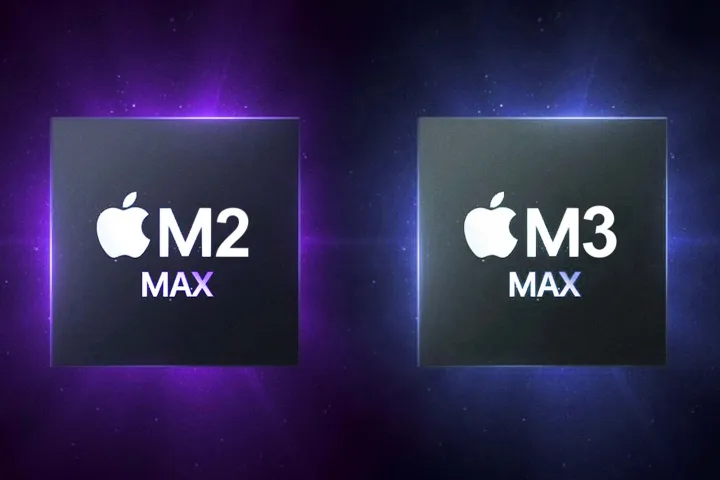M3 chip: what to expect from Apple’s next-gen powerhouse chips
The M3 chip may be a next-generation leap for Apple silicon and Apple’s future Macs. Here’s everything we know, from release dates to performance expectations.

There’s no doubt that Apple silicon has been a massive boost to Apple’s best Macs, banishing the days of sluggish performance under Intel’s processors. But what’s coming next? And more importantly, can Apple keep the momentum going?
Well, the next generation of Apple silicon chips will be the M3, and all the rumors suggest it could be the best addition to the line-up yet. We’ve searched high and low for all the details, so if you’re wondering what to expect from the M3, M3 Pro, M3 Max, and more, you’ve come to the right place.
Release date
 Image used with permission by copyright holder
Image used with permission by copyright holderInitially, there were suggestions that the entry-level M3 could launch at Apple’s Worldwide Developers Conference (WWDC) on June 5, 2023. But that didn’t happen, with Apple continuing to support M2-series chips instead and focusing on launching the Reality Pro headset.
For a while, it seemed as though the M3 might not come out this year at all. Then Apple announced its “Scary Fast” event set for October 30 at 5 p.m. PT. A release of the M3 seems likely, matching reports from both Ming-Chi Kuo and Mark Gurman. Both analysts have suggested that the M3 Pro and M3 Max will arrive in late 2023 in both the 14-inch and 16-inch MacBook Pros.
There’s a curveball rumor from DigiTimes, with the outlet asserting that the opposite will actually be true. According to this rumor, the premium M3 Pro and M3 Max will launch in 2024, ahead of the mainstream M3. That goes against Apple’s past chip rollout strategy, and we’re inclined to believe Kuo and Gurman due to their stronger track record, but only time will tell.
Finally, there are some reports that TSMC (the company that will manufacture the M3 series) is struggling to meet demand for these chips. If that’s true, there’s a chance that Apple’s next chips could be delayed into 2024. We hope that’s not the case, but it can’t be entirely ruled out.
Which Macs will get M3 series chips?
Because there will be several tiers in the M3 series, it’s worth investigating which Macs will get which chips.
Starting with the entry-level M3, previous rumors have indicated it will be outfitted into the 13-inch MacBook Pro, the MacBook Air (both its 13-inch and 15-inch variants), the iMac, and the Mac mini. These aren’t rumored to launch in 2023 but may be held for some time in 2024.
The M3 Pro and M3 Max, meanwhile, will likely find their way into the 16-inch and 14-inch MacBook Pro. And eventually, the idea is that they’ll come to the 27-inch iMac too, although it’s unclear where that product is in the timeline. Gurman has also claimed that the MacBook Air will get the M3 Pro, but it’s not clear whether he means the 13-inch model, the 15-inch MacBook Air, or both.
There’s also the case of the M3 Ultra. This is likely to come to two Macs: the Mac Pro and the Mac Studio. Don’t expect it any time soon, though, since the Mac Pro with an M2 Ultra chip is tipped to arrive at WWDC, while the Mac Studio only launched in spring 2022 and probably won’t be updated until 2024 at the earliest.
Finally, there’s one other chip to consider: the mythical M3 Extreme. Gurman had previously argued that the Mac Pro would get an M2 Extreme chip, but later reversed course and said Apple had abandoned these plans. Could the Extreme branding be resurrected for the M3 generation? We can’t know for sure, but it’s something to keep an eye on.
Entry-level M3 performance
 M2 MacBook Air Luke Larsen / Digital Trends
M2 MacBook Air Luke Larsen / Digital TrendsNow that you know what the M3 lineup could look like, it’s time to examine the potential performance of the M3 chips. While there’s a bunch of speculation on this topic, there are a few things that feel reasonably certain.
For one, every rumor points to the M3 chips being made using a 3-nanometer process. This basically means that the chips are expected to come with far more performance and energy efficiency than Apple’s M2 chips, which are made using a 5nm process. This should mean, in theory, that the M3 chips have the possibility of offering a larger jump in gen-over-gen performance than the M2 chips.
Apple has reportedly bought TSMC’s entire initial supply of 3nm chips, which not only suggests that Apple is planning to put these chips into as many Macs as possible, but also that the company could end up with a sizable advantage over its rivals, who will have to wait while TSMC replenishes its stocks.
Better yet for Apple fans, some reports have indicated that TSMC’s 3nm chips are performing even more impressively in testing than the company had expected. That bodes well for M3 chips up and down the spectrum.
Performance for the high-end chips
 Apple
AppleUnlike the M3, we actually have some apparent specs for the M3 Pro, as well as a degree of speculation on what core counts the M3 Max and M3 Ultra might have. None of this is definitively proven, so take it all with a dose of skepticism.
According to Gurman, the M3 Pro could come with a 12-core CPU (split 50-50 between high-efficiency and high-performance cores), an 18-core GPU, and 36GB of memory. Gurman claims this information was passed to him by an App Store developer.
Gurman has also extrapolated these core counts to make an educated guess as to what the M3 Max and M3 Ultra may look like. Based on the increased core counts in the M2 series compared to the M1 series, he believes the M3 Max might have a 14-core CPU and a GPU with 40 cores or more. The M3 Ultra, meanwhile, could come with a 28-core CPU and up to 80 cores for its GPU.
Since this is just speculation, though, we can’t know for sure how accurate the numbers are. Chances are we’ll find out later in 2023 or early in 2024.

 Astrong
Astrong 































